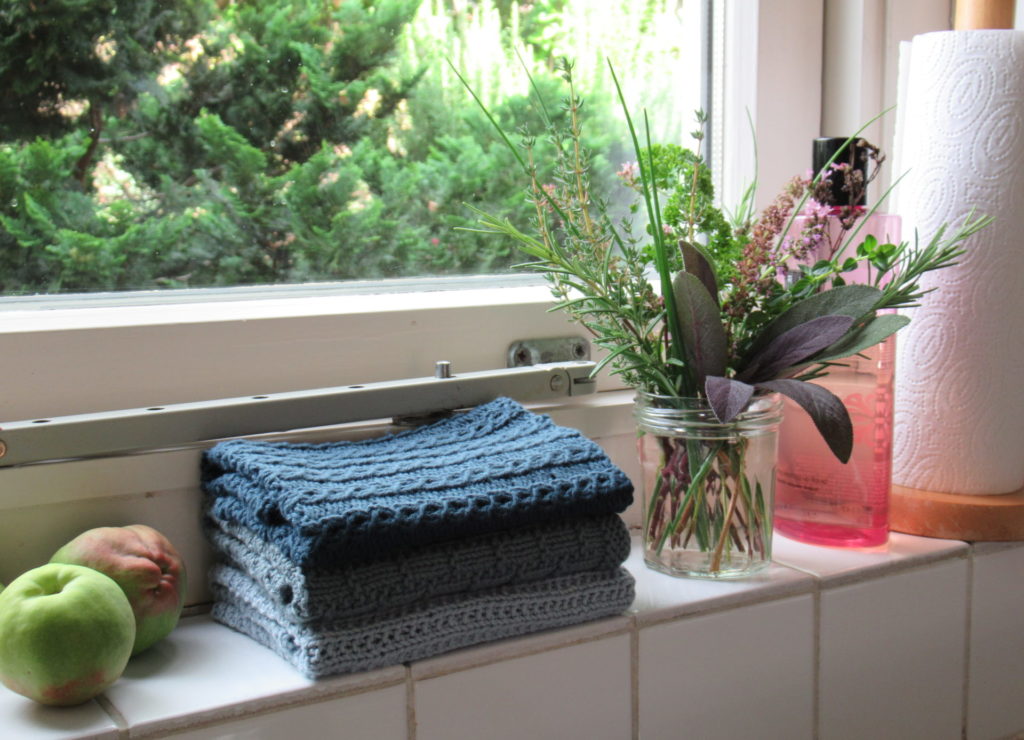
There aren’t many taboos left in this country. We Dutch are a broad-minded people in general. If someone were to say, for instance, ‘I’m a dominatrix in my spare time,’ people will in all likelihood go like, ‘That sounds fascinating! Tell us all about it.’ But there are still some subjects that we avoid talking about.
When people ask me what I do in my spare time and I tell them that I knit, their eyes tend to glaze over. They say things like: ‘Oh, ah, my Nan used to do that,’ and then the conversation falls flat. It’s the same with housekeeping. We don’t talk about it. It isn’t considered sexy.
Cheryl Mendelson, a former lawyer and professor of philosophy, knows about this taboo. She starts her informative and entertaining book Home Comforts with the words: ‘I am a working woman with a secret life: I keep house.’
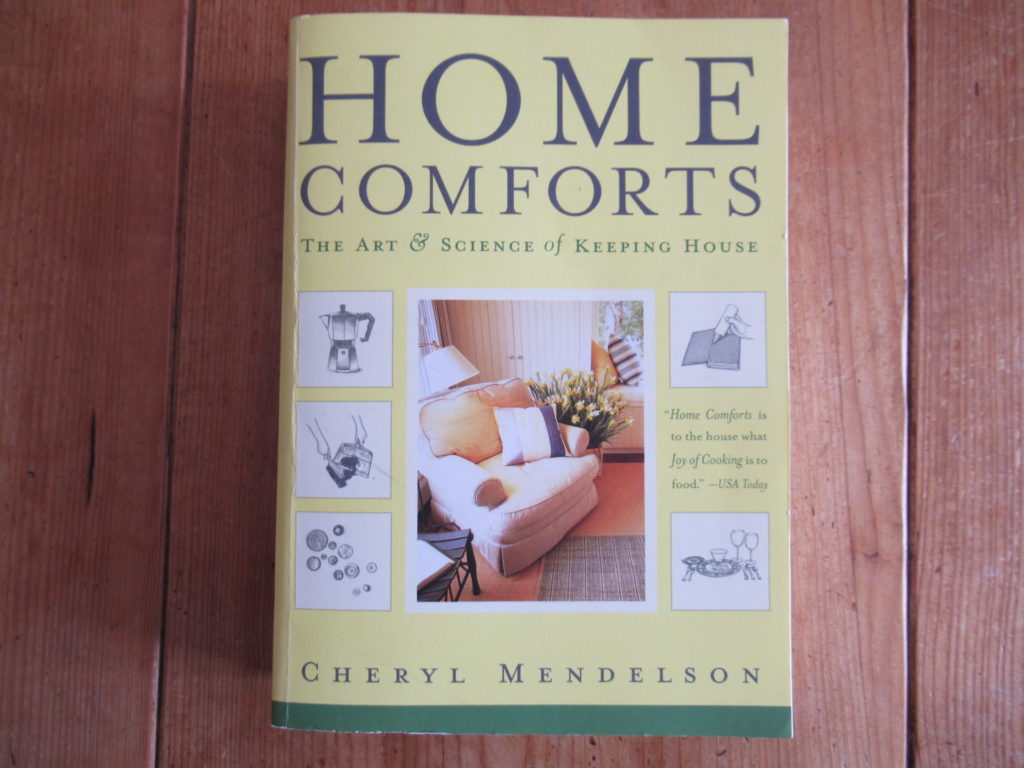
When she told people she was writing a book about the nitty-gritty of housekeeping, the reactions she got were not undividedly enthusiastic. And she writes that even for herself ‘the subject was actually something of a hot potato’ (p. 4).
I’ve kept quiet about two such ‘hot potatoes’ for a long time. My nearest and dearest knew about them, but I usually avoided these subjects with strangers. Starting this blog has felt like a kind of coming out with regard to knitting. And with today’s blog post about knitting dishcloths I feel like I’m getting to the next level, because it’s about housekeeping, too. Another subject that makes us cringe.
Handknit dishcloths = knitting + housekeeping = double cringe
(Or is it just me? How do you feel about this? Do you knit dishcloths too? How do people react? Do you mind?)
So, why knit dishcloths anyway?
For me, the seed was sown in Norway in 2006, when I bought Vinterlappar og annen vintermoro, a crafts book with many great ideas for things to make and do in winter. There is also a knitting pattern for a dishcloth in it. It was the picture of the stacks of dishcloths in shades of blue and green that did it for me. How lovely!
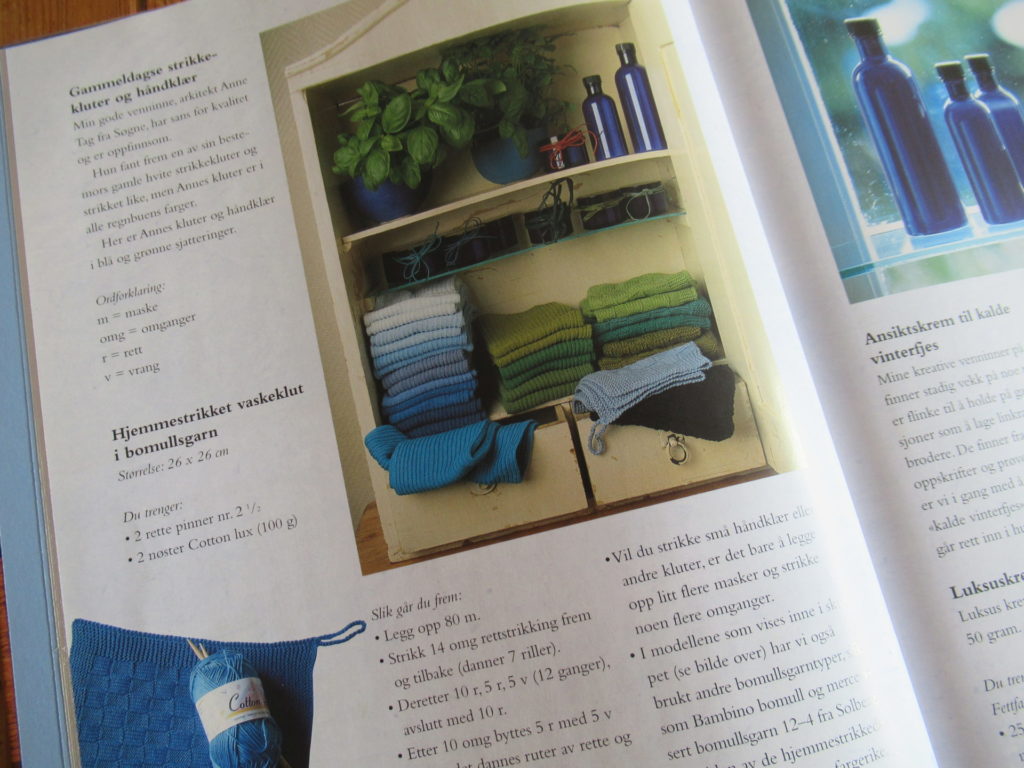
But knitting dishcloths? No, no, no, I wasn’t going there. Too twee by half!
I came across more handknit dishcloths in Scandinavian magazines that made me sigh ‘how lovely’, but always a feeling of embarrassment held me back.
Early this summer a knitting friend showed me the dishcloths she’d knit. Again I thought ‘how lovely’. And this time, I finally caved in. Why? Well, for several reasons.
Reasons for knitting dishcloths #1: Choosing the yarn is fun
Choosing yarn is always fun. In this case you’ll need cotton, a material available in many, many colours, which makes it even more fun. And the advantage with choosing yarn for dishcloths compared to items to wear is that you can choose any colours you like – bright or subtle. They don’t have to look good with your clothes, your hair or your complexion.
As I don’t have a lot of experience knitting with cotton yarns, this opened up a whole new world for me. I browsed around in shops and on the internet until I hit on a yarn that came with a shade card. (I love shade cards!)
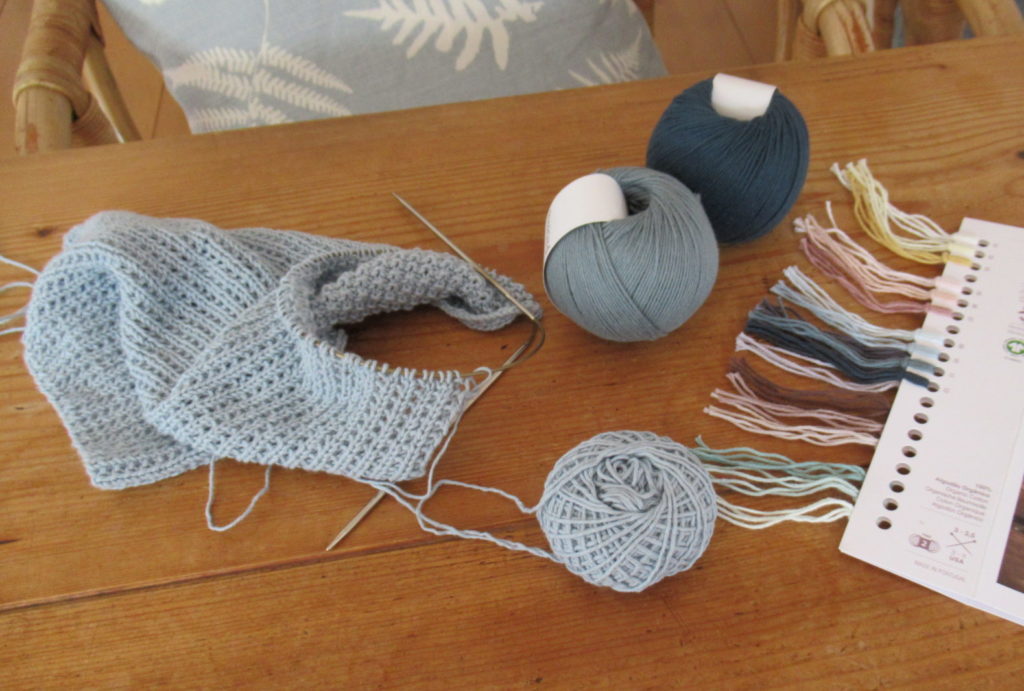
I chose 3 shades of blue and cast on for my first dishcloth. And that brings us to
Reason for knitting dishcloths #2: Scope for trying out stitch patterns
Dishcloths are ideal for trying out and enjoying the rhythms of all kinds of stitch patterns. I started with one in broken rib:
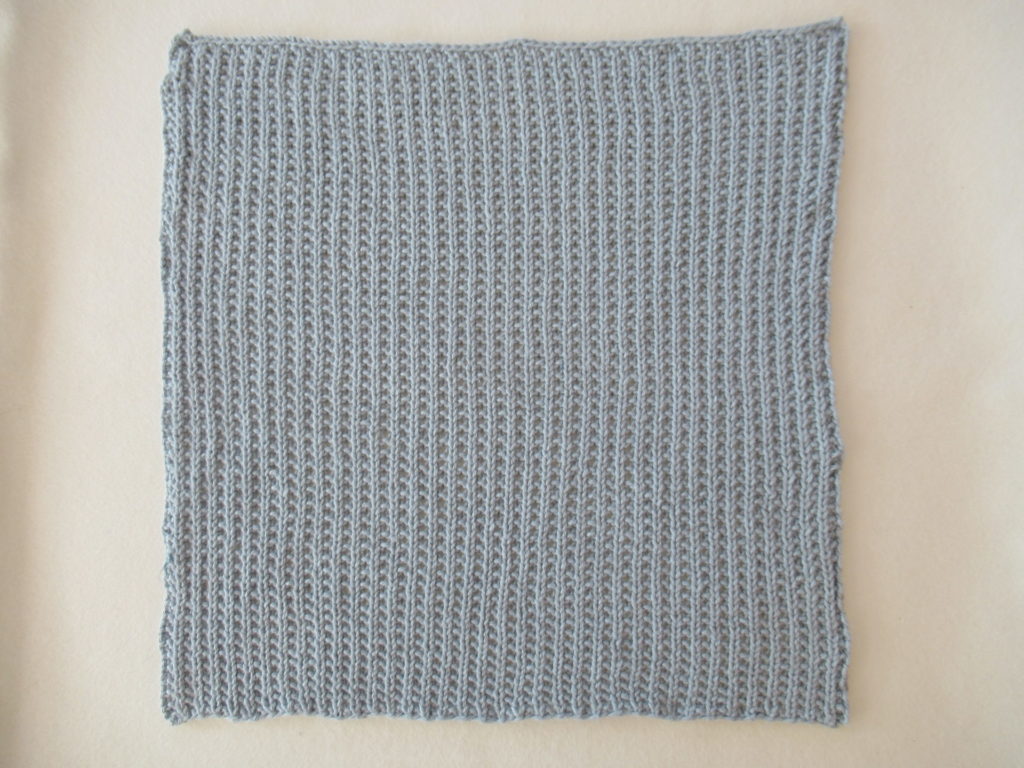
Lovely in all its simplicity, but the edges were rather loose. Hmmm – something to do differently next time.
I immediately cast on for the next one. This time in broken basket weave, a pattern that required a little more attention.
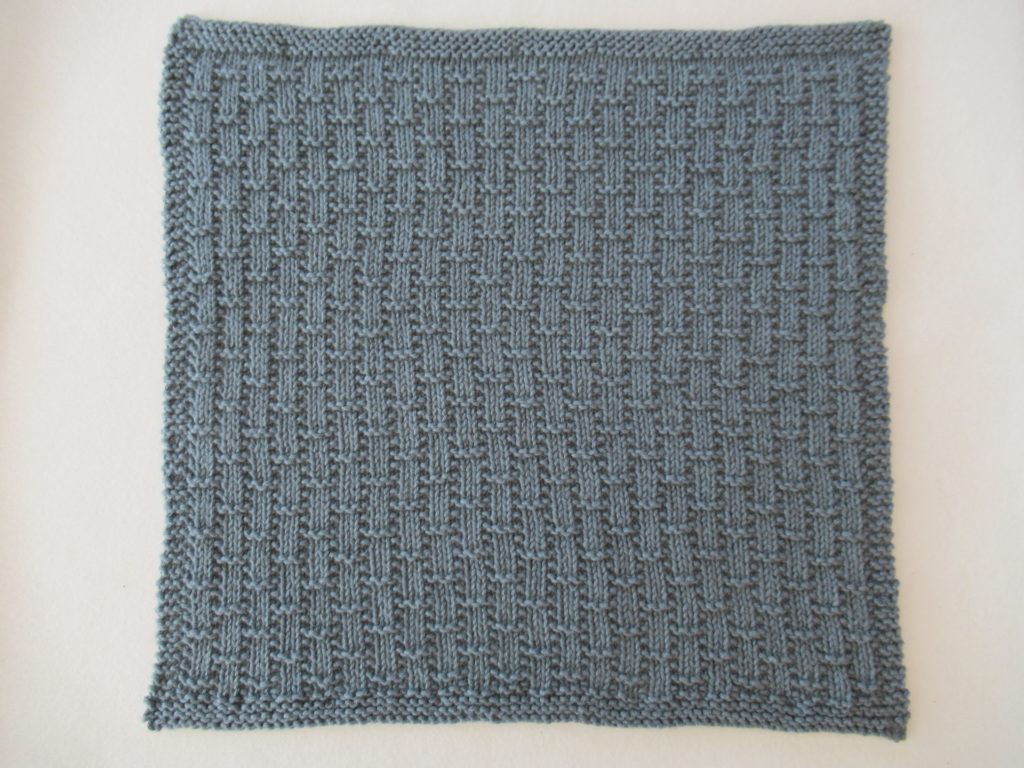
Even nicer than the first, because it has a border in garter stitch that gives it stability, and because the stitch pattern is more interesting to knit and look at.
For my third dishcloth I chose a stitch pattern called Cable Stitch in the booklet I used. At home we call this stitch ‘Coffee Beans’. I had my doubts about this one, because it is a very stretchy stitch that I would normally rather choose for something like sock cuffs. It looked really nice in the photograph, though, so I tried it anyway. But I ended up with a long and narrow dishcloth, which was not what I was aiming for:
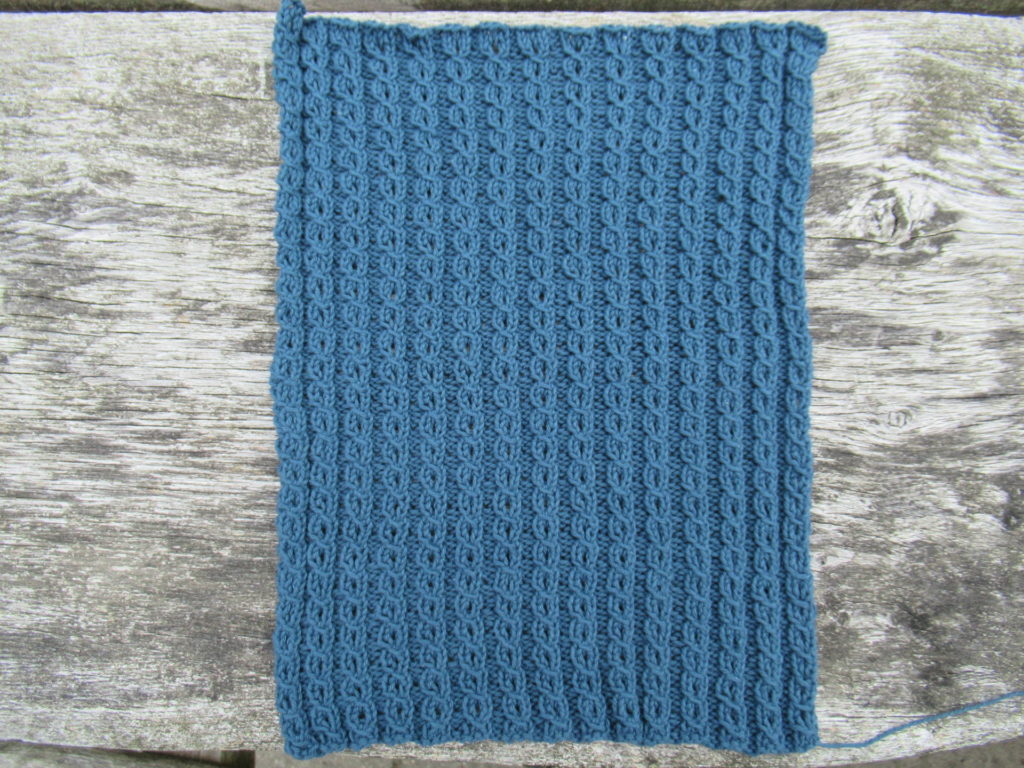
After washing I was able to block it to a square cloth…
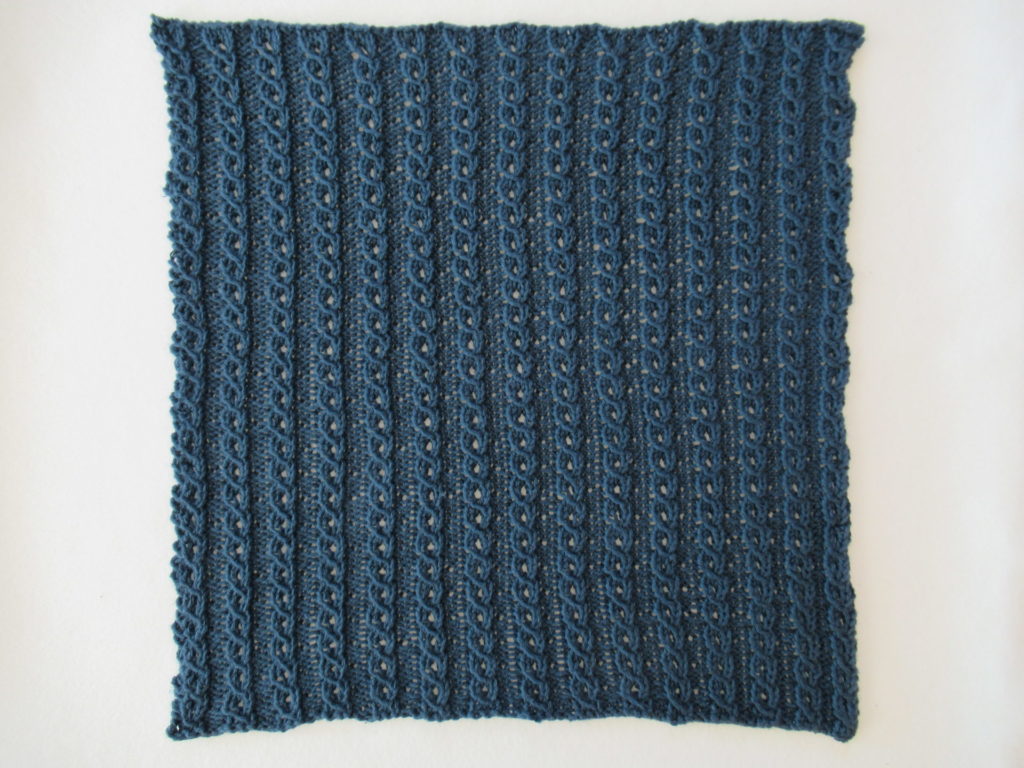
… but I’m not happy with the edges, and I wonder what is going to happen when I use it and wash it again. I definitely don’t intend to block my dishcloths every time I’ve washed them.
By this time I was so taken with these simple little cloths, that I asked our daughter to get some more yarn from a shop she passes every day on her way to work. ‘Please choose some harmonious shades,’ I said. And she picked these:
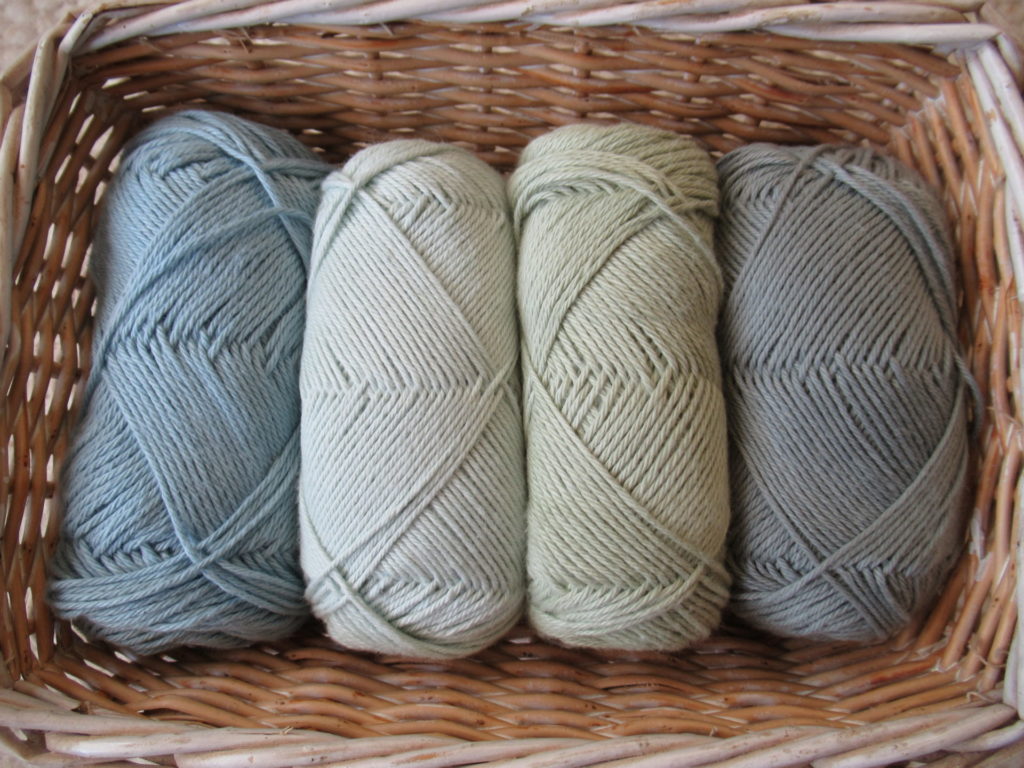
Nice and subtle, aren’t they? While you’re reading this, there are more dishcloths in the making. I’ll write about these, about the yarns, and about my experiences with using and washing them in another post.
Ah, dishcloths are such great little projects. And that brings us to reason number three.
Reason for knitting dishcloths #3: Portability
A dishcloth would make an ideal travel project – small, lightweight, not too difficult. But…
… what if I’m knitting on the train and someone asks me what I’m making? What do I do then? I can’t just admit I’m knitting a dishcloth, can I? Way too embarrassing!
Still, one day, with a long train journey ahead of me, I put my embarrassment aside. I didn’t have anything else suitable to take along, so I grabbed my current dishcloth and stuffed it into my backpack. But when the guard who came along to check our tickets asked me, ‘What are you making? A scarf?’ I was only too relieved that she hurried on without waiting for an answer. Phew!
Will there ever come a day when I can say, ‘I’m a dishcloth knitter and proud of it’?
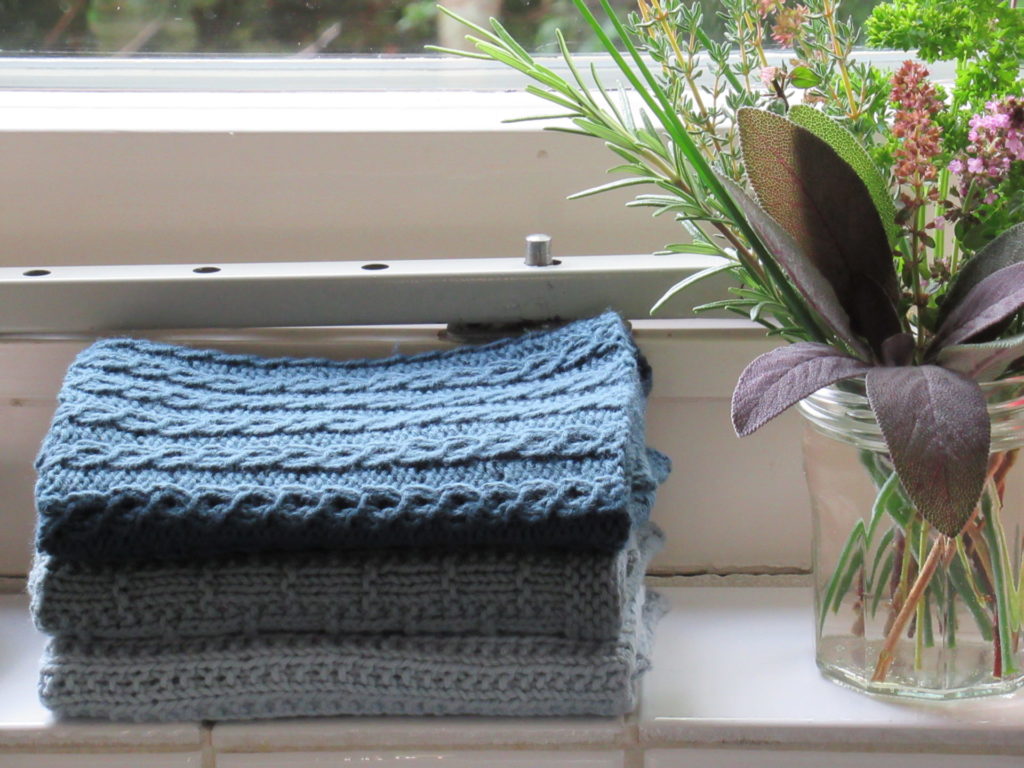
Oooh Marijke! Wat een heerlijke, herkenbare post! Ik heb met een glimlach gelezen!
Mooie kleuren heb je ook gekozen.
Dank je voor dit vrijdag-ritueel.
XXX
Ik was heel erg benieuwd of anderen dit ook zo ervaren. Fijn om van je te horen.
Grappig, ik heb ze vertaald, Doekjes breien en Doekjes haken. Ik herken veel in je verhaal en denk dat ik de haakvariant nog weleens oppak, vooral voor onderweg.
Ik heb bijna altijd één ‘wachtkamerproject’ op de pennen staan, een klein, eenvoudig brei-of haakwerk voor in het openbaar vervoer, voor in wachtkamers, enzovoorts.
Gebruik je deze doekjes als schoonmaakdoekjes of zoals de Amerikanen dat doen, in plaats van een afwasborstel? En duurt het niet uren voor ze droog zijn? De praktische taboevragen, zullen we maar zeggen.
Ha, ja, ik had gezien dat je de boekjes vertaald had. Leuk! Ik gebruik ze als aanrechtdoekje. Ze drogen minder snel dan synthetische doekjes. In het gebruik en qua droogtijd zijn ze vergelijkbaar met gekochte katoenen doekjes.